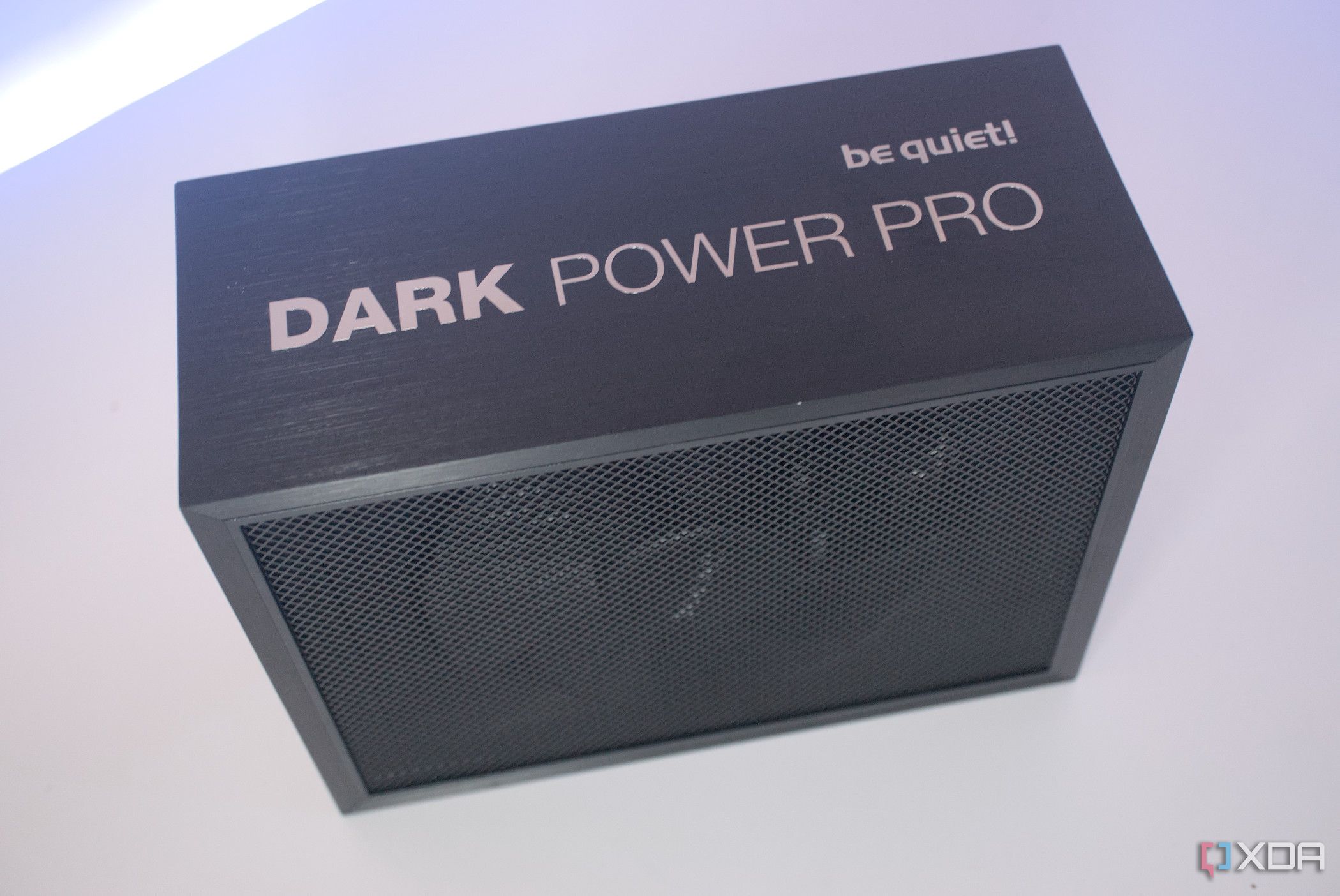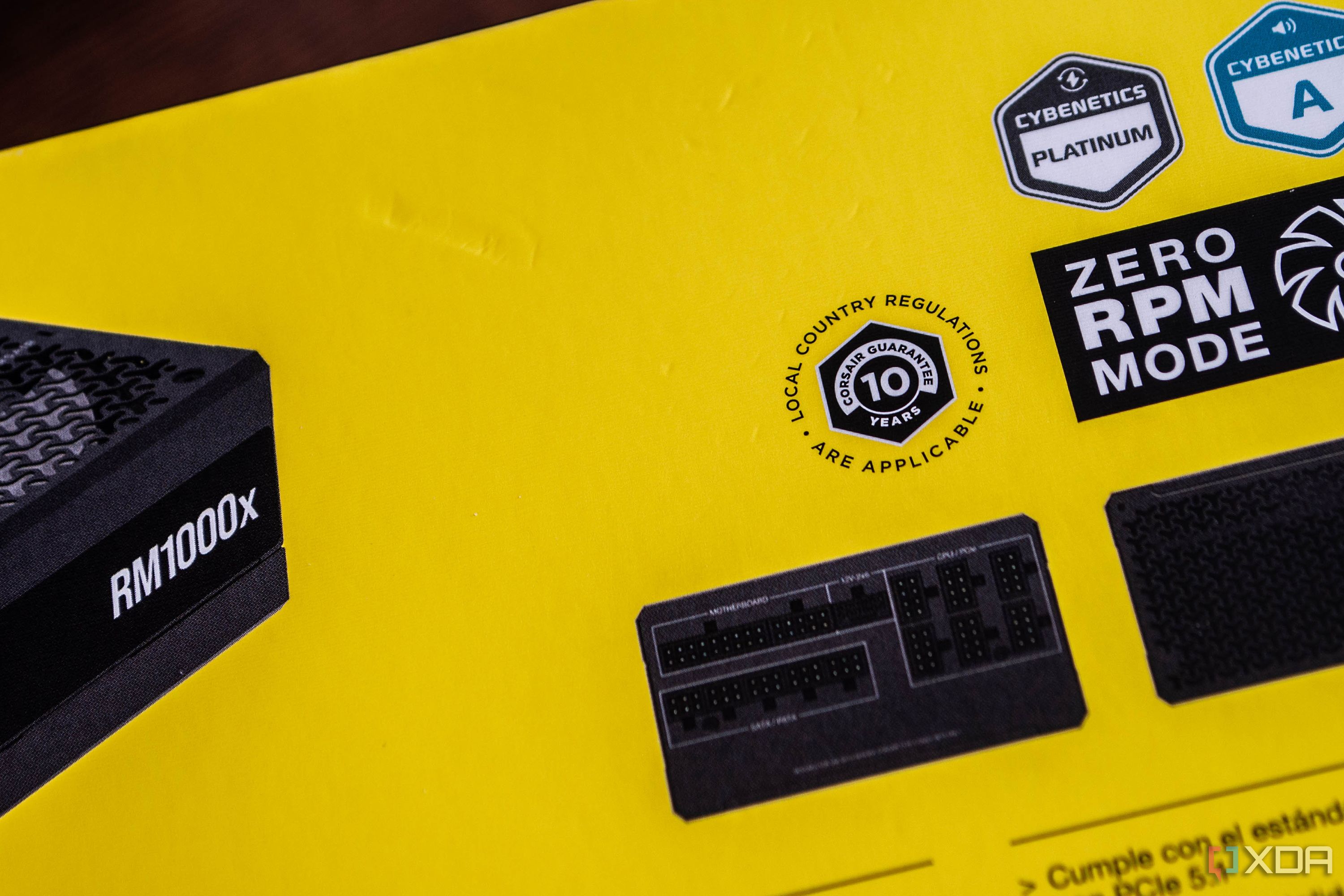I pressed the power button on my PC tower, and almost immediately, there was a loud pop. The lights in the room went out as the breaker tripped, and the smell of burning electronics emanated from my PC. My heart sank immediately as worst-case scenarios started running through my mind. I thought about how irreplaceable my GPU is and my brand-new 9800X3D that I had just spent my hard-earned money on.
I prayed to whoever would listen that it was just a PSU failure, and I hoped that the PSU did its job protecting my other components. It was a nerve-wracking 24 hours until I could replace my ~4.5-year-old EVGA Gold 850W with a Corsair RM1000x, and the wash of relief that came over me after I installed it and everything turned on was immense. I feel like I got lucky, and this incident changed how I’ll approach PSUs forever. Here are the things I’ll do differently now for the rest of my PC-building days.

Related
6 features to look for when buying a new PSU
Here are the most important things to look out for when buying a new PSU for your PC
High wattage, high margin of error
I’ll admit that I’ll be overbuying wattage from now on
My current PC was built in the fall of 2020, along with the absolute tsunami of PC and crypto newcomers that led many component prices to the moon. I slept in my car for 2 days in order to nab an RTX 3080 at my local Micro Center and a Ryzen 5600X. Every available PSU calculator suggested that an 850W unit would be more than enough to run my new build, especially considering that PCs are rarely running at full load or peak power draw for extended periods of time. So I happily picked up an EVGA Gold-rated 850W power supply, which ran happily for almost five years.
Recently, I upgraded from a B550 AM4 board to an X870E AM5, along with a Ryzen 9800X3D. Both boards were full-size ATX, and yet again, PSU calculators seemed confident that an 850W unit is plenty for my build, even with an upgraded CPU. Looking back, the price difference between an 850W and a 1000W unit wasn’t enough to justify leaving a smaller margin of error between what the PSU could handle and what the PC might demand. After all, there are so many little variances in power draw between builds, ranging from how many SSDs you’re running and of what size, to the number of GB and speed of your RAM.

Related
5 signs it might finally be time to upgrade your PSU
It’s time to bid goodbye, once your old PSU is no longer enough to meet the demands of modern hardware
Get that tower off the floor
Do you like breathing? So does your PSU
Depending on the size of your case, your gaming PC can be an awfully large and cumbersome piece of machinery, so the temptation to take it off your desk and place it on the floor is understandable. My PC is quite large, and so I’m guilty of this myself. I’ll be forever kicking myself for the months throughout my PC’s life that it lived on the carpeted floor of my home.
Since my PSU’s intake fan is located on the bottom of the unit, and the PSU itself lives at the bottom of my PC case, the only clearance for clean air is the height of my case’s feet, lifting the intake a mere inch off whatever surface it sits on. While there’s plenty of clearance when placed atop your desk, it can get cut to almost nothing when placed on a high-pile carpeted floor. This likely had an impact, and it’s not a mistake I’ll be making again. This is obviously less of a concern if your PSU intake is not at the bottom of your case.

Related
5 reasons you won’t need a 1600W PSU any time soon
1600W power supplies are overkill for almost everyone
Preemptive replacement or reputable warranties
One or the other is a must for me going forward
Most reputable component brands offer limited warranties on their products, and many brands like Corsair offer even longer warranties specifically for PSUs. When buying your PSU, always check what warranties are offered and consider replacing it or upgrading once you are at the very end of your warranty period. While not everyone will agree with preemptive replacement, I know that going forward it will offer me some peace of mind, and that’s worth the cost of a new PSU even if it’s a little early in the replacement cycle.
While the best PSUs have loads of internal protection and fail-safes built in to protect your other components in the event of a massive failure, I don’t feel the stress is worth waiting until they completely fail. Depending on why and exactly how it fails, your other components are still at risk, even if the risk is small. I’d rather just replace it after five or seven years and sleep better knowing it won’t fail any day as it begins to reach the end of its lifecycle.
Being more prudent when buying and more careful with using your PSU should go a long way
I’m glad my PC survived a truly scary incident, and I’ve learned that being more judicious in the PSUs I buy and how I look after them can go a long way toward extending their lifespan. A PSU is generally among the cheapest parts of a PC build, but it also stands in the way of the electricity coming in from the wall and your most delicate and expensive components. While this particular incident seems unrelated to surges or external issues, it’s always a good idea to plug your PC into a surge protector or consider a UPS to ensure clean and stable electricity for your PC at all times.











